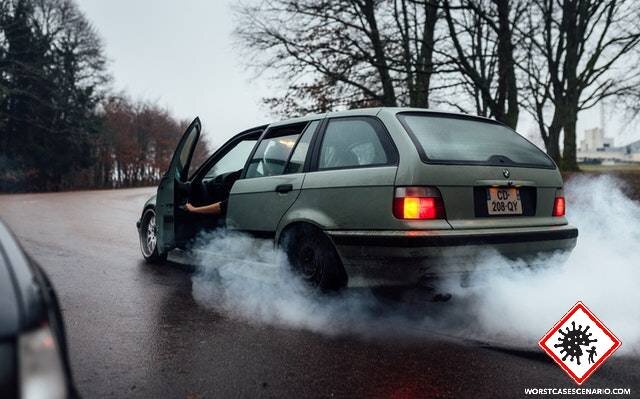How to Stop a Car with No Brakes
1. Turn on your hazards to warn other drivers to avoid your vehicle.
2. Take your foot off the gas and begin pumping the brake pedal.
Pumping the brakes should turn off cruise control if you have engaged it, but if not, turn off cruise control as well. You may be able to build up enough pressure in the braking system to slow down a bit, or even stop completely. If you have anti-lock brakes, you do not normally pump them—but if your brakes have failed, this may work.
3. Do not panic—relax and steer the car smoothly.
Cars will often safely corner at speeds much higher than you realize or are used to driving. The rear of the car may slip; steer evenly, being careful not to over-correct.
4. Shift the car into the lowest gear possible and let the engine and transmission slow you down.
5. Engage the parking brake.
Use even, constant pressure. In most cars, the emergency brake (also known as the parking brake) is cable operated and serves as a fail-safe brake that should still work even when the rest of the braking system has failed. The car should slow down and, in combination with the lower gear, will eventually stop.
6. If you are running out of room, try a “bootlegger’s turn.”
Press or yank the emergency brake hard while turning the wheel a quarter turn in either direction—whichever is safer. This will make the car spin 180 degrees. If you were heading downhill, this spin will head you back uphill, allowing you to slow down.
7. If you have room, swerve the car back and forth across the road.
Making hard turns at each side of the road will decrease your speed even more.
8. If you come up behind another car, use it to help you stop.
Blow your horn, flash your lights, and try to get the driver’s attention. If you hit the car, be sure to hit it square, bumper-to-bumper, so you do not knock the other car off the road. This is an extremely dangerous maneuver: It works best if the vehicle in front of you is larger than yours—a bus or truck is ideal—and if both vehicles are traveling at similar speeds. You do not want to crash into a much slower-moving or stopped vehicle, however.
9. Look for something to help stop you.
A flat or uphill road that intersects with the road you are on, a field, or a fence will slow you further but not stop you suddenly. Scraping the side of your car against a guardrail is another option. Avoid trees and wooden telephone poles: They do not yield as readily.

